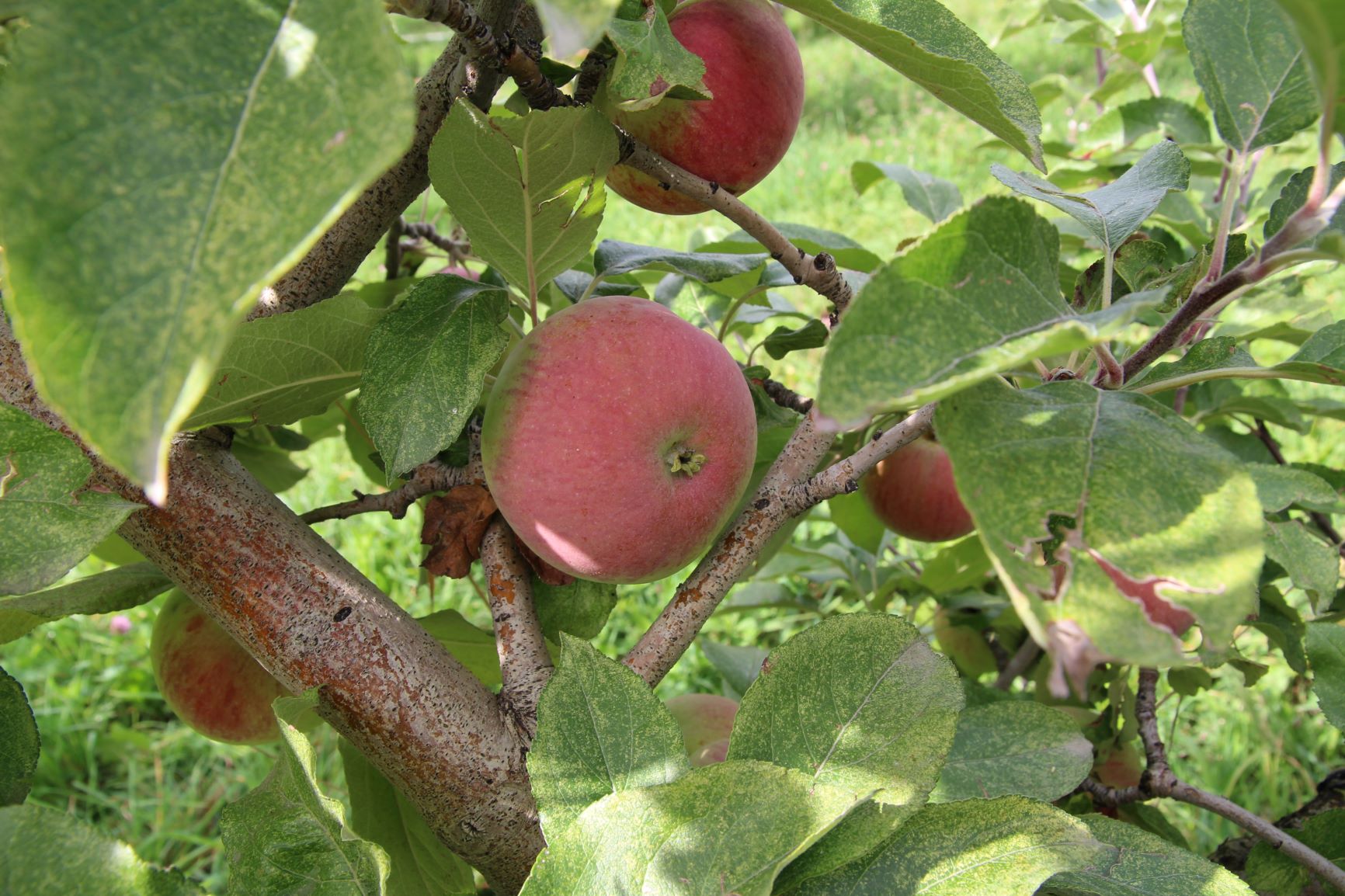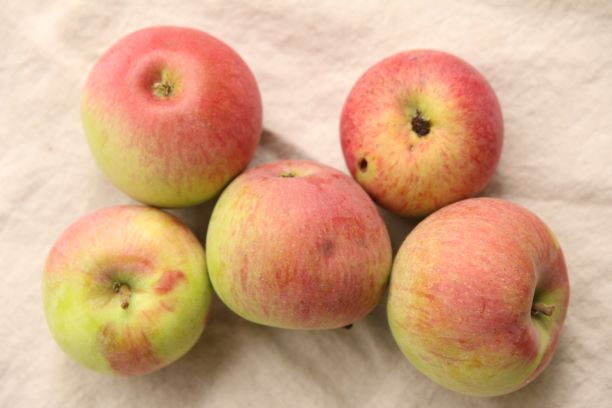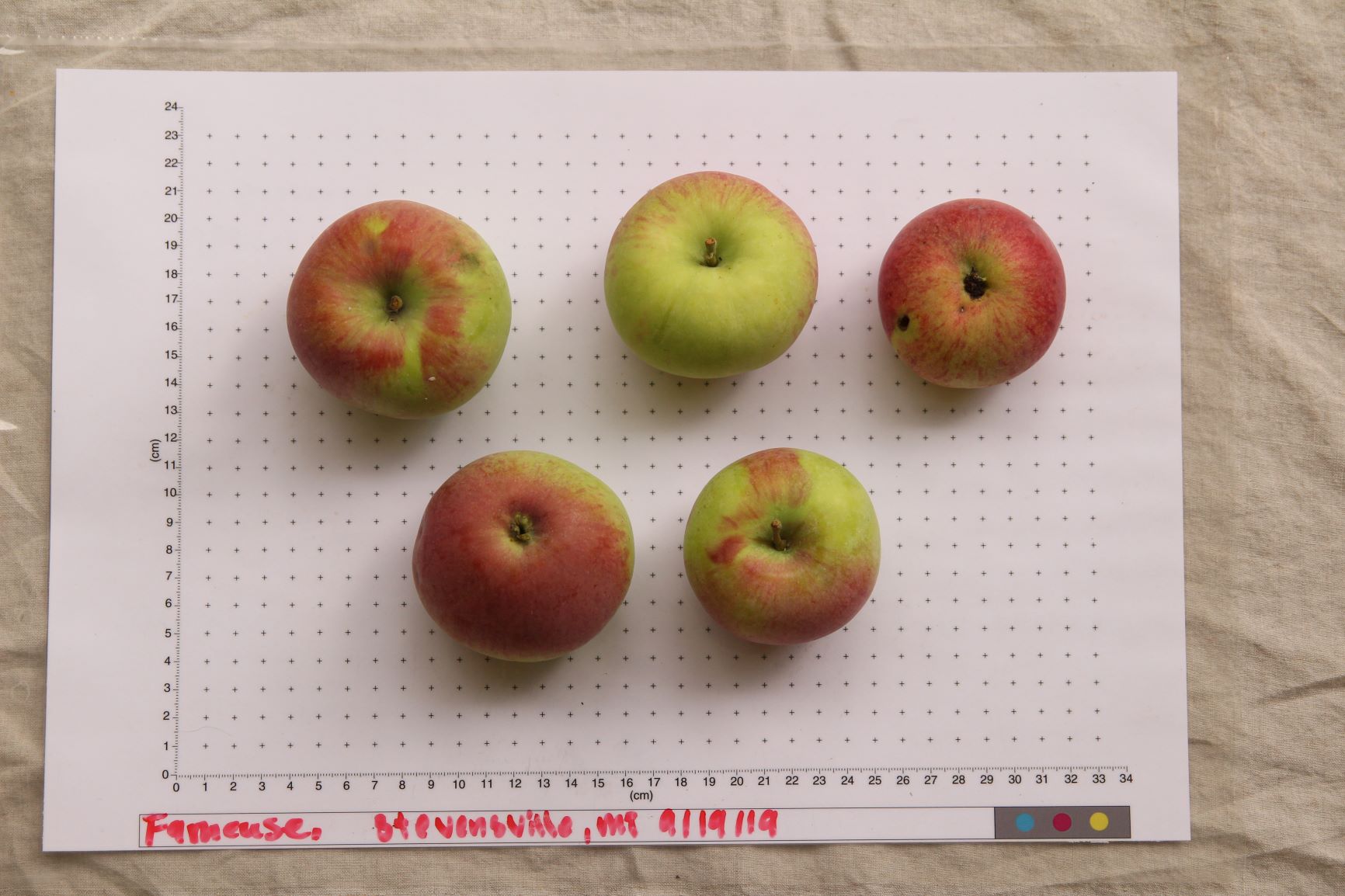Fameuse
Fruit Description

Size: Medium
Shape: Round, round-conic or conical. Regular.
Skin: Red flush over green to yellow green ground color. Sometimes striped or mottled, few inconspicuous dots. Smooth. Light bloom.
Stalk (stem) and Cavity: Stem medium to long protruding. Cavity broad, acute, sometimes russeted usually red or green.
Basin: Shallow, abrupt, may be bumpy.
Calyx (Eye) and Calyx Tube: Calyx open or closed. Small. Sepals reflexed tips, downy. Calyx tube narrow, funnel. Stamens median or basal.
Core (Vertical): Small, axile, core lines clasping.
Carpels and Axial Sac (Transverse): Carpels narrow, elliptical, symmetrical. Axial sac small to medium.
Seeds: Long, slender, dark brown, acute to acuminate.
Flesh: Snow white as its namesake, crimson streaks or stains. Tender, juicy.
Flavor: Sprightly, sub-acid to mildly sweet. Aromatic.

Additional Notes
Synonyms: Snow, La Fameuse, Pomme de Niege, Sanguineus, Snow Chimney, Snowball
First Recorded: circa. 1700, reported in Quebec in 1730
Origin: Canada, possibly France
Bloom time: Mid
Harvest: Late
Use: Fresh eating, dessert, culinary, market.
Storage: Poor, until Christmas under good conditions
Disease: Susceptible to scab
Tree: Vigurous, upright, sturdy long branches.
Parentage: Unknown, is parent to several apples including McIntosh and Cortland
Frequency in Montana Orchards based on DNA testing: Low
Look Alikes: McIntosh and Cortland
History
While the exact origins of the Fameuse are unknown, historical records indicate it was established and being widely distributed in Quebec and Ontario around 1700. It was also cultivated in Vermont during the same period. It was favored for its cold hardiness and quality. Some reports indicate it may have been brought from France, at the least it was likely planted from seeds of French origin, by settlers arriving from France in Quebec. According to Bussey, it has been described as similar to or the same as the Pomme de Neige cultivated in Orleans France around 1628.
In Montana it was reported among the many varieties inspected by the Montana State Board of Horticulture in the First District (Dawson, Custer, Yellowstone, Sweetgrass, Park, Carbon and Rosebud counties) in 1901 and as an entry at an apple show in 1911. Since then it has remained a prized apple for both backyard and commercial growers. It is a parent of McIntosh.






References:
Bussey, D. J., & In Whealy, K. (2016). The illustrated history of apples in the United States and Canada.

